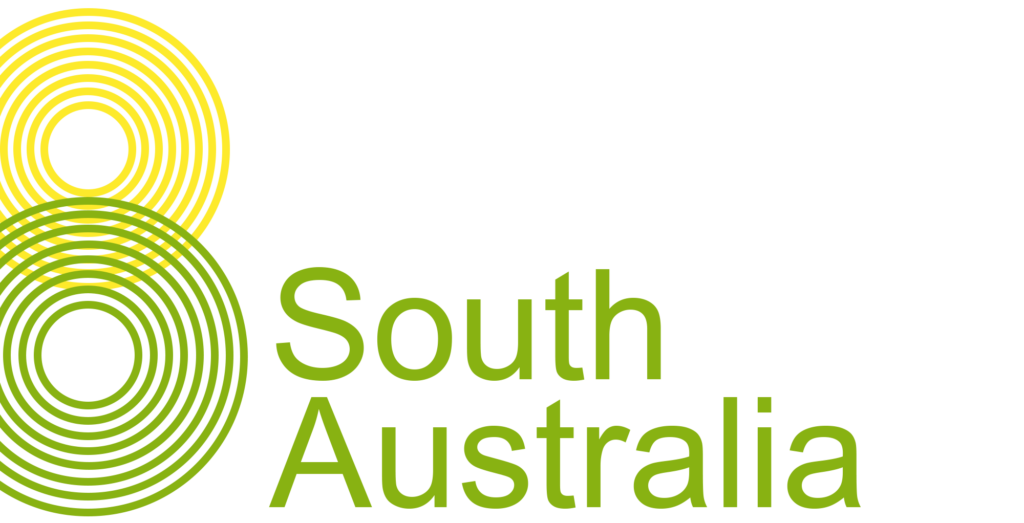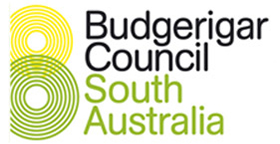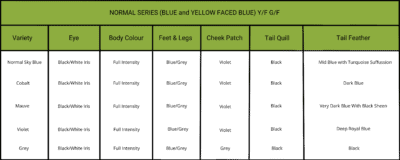
The Yellow Faced Budgerigar/Budgie
The yellow faced budgerigar is one of the most surprising and interesting of all budgie mutations to evolve. First appearing in England in 1936. Mrs. G. Lait of Grimsby bred the first mutation shown at the Yorkshire Observer show at Bradford in 1938. On account of this, several different forms are now identifiable.

Image Courtesy of Rod Turnbull and the ANBC
Prior to 1990 the most common form of Yellow Faced Budgie in Australia was a mutation with a buttercup face (perhaps the Golden-faced variation that was noted in England among the first examples of this variety). However, in recent years these are overshadowed by the English form which has a lighter cream shade. The later has a somewhat different pattern of reproduction, thus making the breeding of exhibition-quality birds far easier.
Identification
The Standard for the Yellow Faced budgerigar is as for all varieties in the blue series. That is, including grey and conforming in every respect except in the following detail.
The exhibition form is a unique breed that boasts a distinctive cream/lemon face and forehead. The body color is the same as the corresponding non-yellow faced series with minimal intrusion of yellow affecting the purity of the primary color rump and underparts, which are solid and uniform throughout. The back and wing coverts (upper & under) are as for the appropriate blue series variety, with clearly defined white outlining and free from any intrusion of body color or ‘bloom’. The mask is deep and wide (not cleft) and extends beyond two large cheek patches. Six clearly defined large symmetrical throat spots ornament the mask. Naturally, the base of the cheek patches partially covers the outer spots of the mask. To that point, they are violet in the blue series, or grey in the grey variant.
Further Information on the Yellow Faced
The mask has a cream/lemon coloration that extends over the face and crown, with minimal intrusion into the undulation at the back of the head. The markings on the cheeks, back of the head, neck, and wings have a light flush of cream/lemon color that may be visible in the otherwise white areas at the edge of the markings. In addition, the Yellow Faced Blue has pale cream/lemon overlay on the white areas of the secondary tail feathers, a black eye with white iris ring, and blue/grey feet. The cock has a blue cere, while the hen has a brown cere.

For the exhibition budgerigar, where this variety is mixable with any variety that displays white ground colour, minimal spillage of yellow from the mask is ok to the extent as described in the Standard.
Suggested Pairings
Yellow Faced budgerigars can be produced in both single factor and double factor forms. The double factor form appears as white faced for blue series. To that end, it is impossible to visually differentiate between a normal blue, and a double factor form. Moreover, it will be upon breeding, where the double factor form produces all visual single factor yellow faces, that it can be identified. For a green bird carrying the single factor form, they are indistinguishable from the Green and Grey Green.

Click here to download normal yellow faced blue budgie

